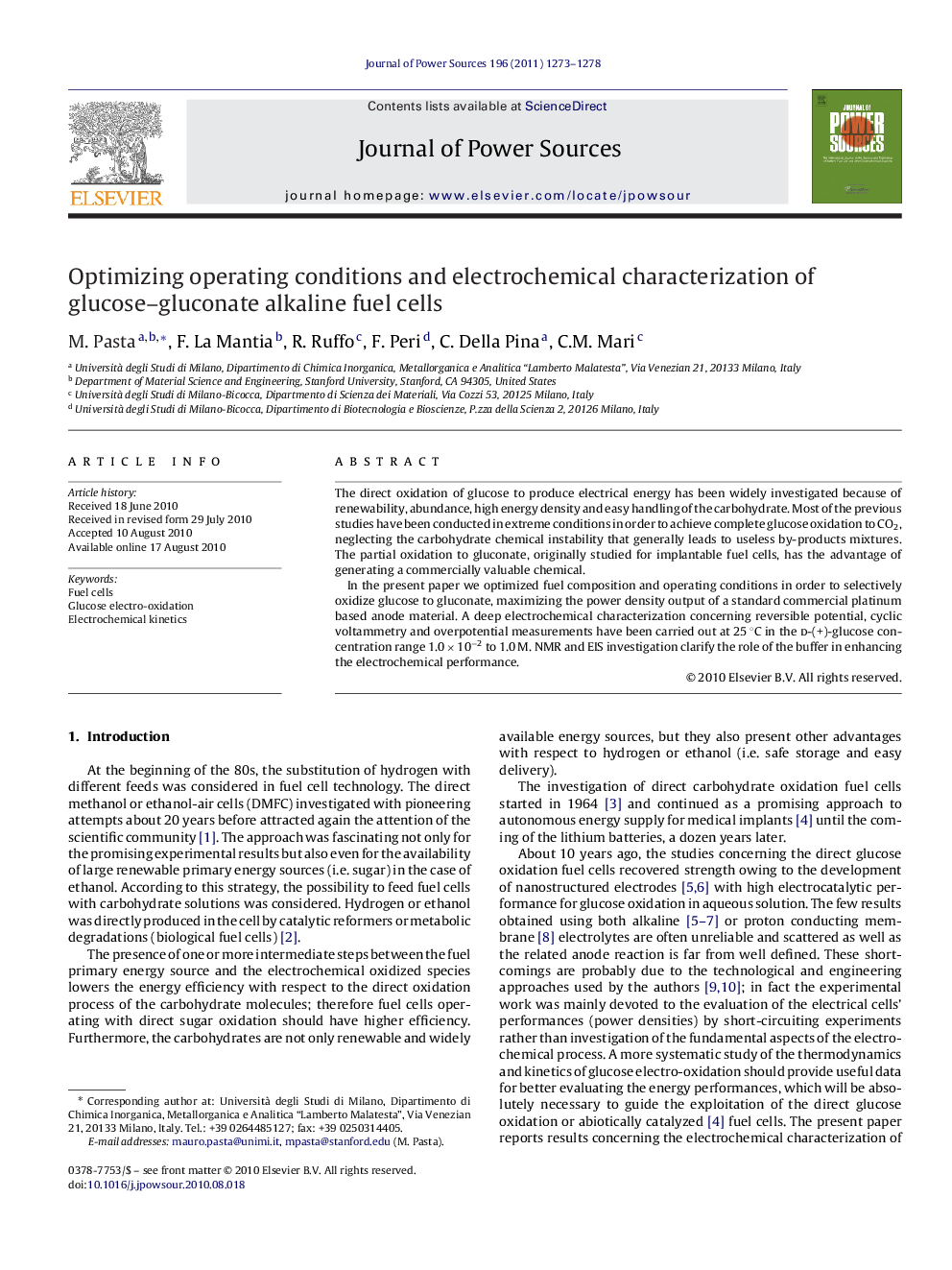| Article ID | Journal | Published Year | Pages | File Type |
|---|---|---|---|---|
| 1289620 | Journal of Power Sources | 2011 | 6 Pages |
The direct oxidation of glucose to produce electrical energy has been widely investigated because of renewability, abundance, high energy density and easy handling of the carbohydrate. Most of the previous studies have been conducted in extreme conditions in order to achieve complete glucose oxidation to CO2, neglecting the carbohydrate chemical instability that generally leads to useless by-products mixtures. The partial oxidation to gluconate, originally studied for implantable fuel cells, has the advantage of generating a commercially valuable chemical.In the present paper we optimized fuel composition and operating conditions in order to selectively oxidize glucose to gluconate, maximizing the power density output of a standard commercial platinum based anode material. A deep electrochemical characterization concerning reversible potential, cyclic voltammetry and overpotential measurements have been carried out at 25 °C in the d-(+)-glucose concentration range 1.0 × 10−2 to 1.0 M. NMR and EIS investigation clarify the role of the buffer in enhancing the electrochemical performance.
